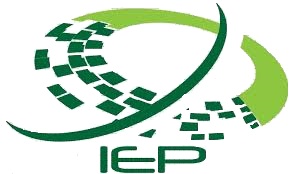
Title: Muslim Economic Thinking: A Survey of Contemporary Literature
Author: Muhammad Nejatullah Siddiqi
Publisher: The Islamic Foundation UK, 1981
This book is written by Prof. Muhammad Nejatullah Siddiqi. It is a literature review of works in Islamic economics in the twentieth century from the beginning of the century till 1975. The author has reviewed books, research papers, monographs, Thesis, policy documents and even manifestos in English, Urdu and Arabic language.
It is one the most comprehensive account of Muslim economic thinking. Those who want to compare and assess the current progress in Islamic economics would find it a very useful reference to see how much more progress is made in developing Islamic economics.
On the positive side, there is progress in Islamic banking and finance, both at the practical level as well as in the literature analyzing policy and operations along with assessing performance from the profitability, efficiency, coverage, impact and goal fulfilment (Maqasid) perspective. But, in other areas like public finance and central banking, the significant strides are yet to be made.
In institutionalizing Islamic social finance institutions like Zakat and Waqf, there was little progress until recently. The jurisprudential issues which need resolution for effective operationalization of these institutions are still in need of scholarly consensus.
In a way, the prioritization of research areas has followed practical shaping of Islamic finance in the form of institutions. Since banking, insurance and asset management were areas having commercial demand and potential, there is much swift progress in practical development of operational capacity of products and services in these areas.
Contemporary scholars with a bend towards empirical research have done performance assessment studies analyzing profitability, risk, efficiency and impact of these institutions both on standalone as well as on comparative basis.
Contemporary scholars with a bend towards Islamic jurisprudence have contributed in analyzing the current and potential products and proposals in the light of Islamic jurisprudence. Some of them had also done assessment of performance of Islamic financial services from the Maqasid perspective.
Prof. Siddiqi in his book reviews literature written in the first three quarters of the twentieth century. That literature is visionary and optimistic. It may not have mathematical elegance, empirical analysis and specific analysis guiding operations of Islamic financial institutions, but it did well in presenting the Islamic worldview and contrasted its features from Capitalism and Communism.
The economic analysis of positive Islamic injunctions as well as negative Islamic injunctions is presented with sound arguments in the literature during that period. The research questions addressing rationale for prohibition of Riba, property rights in Islamic economics, how to deal with income inequality and how to inculcate socially and environmentally responsible behaviour are adequately answered.
In analyzing economic system, some authors have tended towards Socialism as it had significant appeal in the middle two quarters of the twentieth century while majority have presented Islamic economics as a middle ground between Capitalism and Socialism with a distinction more apparent in the policy tools, institutions and instruments to achieve the economic aims.
In analyzing economic theorizing, quite a few authors had cautioned against taking all assumptions in mainstream economics as is. They opine that with a transformative goal, Islamic economics cannot be value free. Hence, moral axioms shall be incorporated in economic theorizing. Some had resorted to mathematical modelling to instigate analysis with this approach. But, unfortunately, not much progress could be made later on.
In approaching development in Islamic economics framework, the earlier authors had emphasized on multiplicity of goals even before the Millennium Development Goals and Sustainable Development Goals. Emphasis on ethics naturally brings focus towards reducing deprivation and inequalities and fostering responsibility in the use and distribution of resources.
In early literature on interest-free banking, the focus was on profit sharing models and need fulfilment. Remarkably, there is more variety of literature on central banking in the 70s and 80s as compared to now. Since Islamic financial institutions only started coming in the later part of the last quarter of the twentieth century, the earlier literature paved the way for highlighting the economic ills of interest in allocation of resources, distribution of resources and access to finance.
Finally, the author also gives account of historical works on Muslim thinkers in past. Both the Muslim economists as well as non-Muslim economists have greatly appreciated and acknowledged the works of Ibn-e-Khudun. He discussed division of labour, labor theory of value, developmental stages of civilization and non-linear relationship between tax rates and tax collection (as in Laffer curve) much earlier than his predecessors like Adam Smith, David Ricardo and Arthur Laffer.
All in all, this book is a useful resource to get a quick sense of early literature on Islamic economics. The author has also given a topical Bibliography at the end for the benefit of readers who want to read further.
The only limitation is that since it is a survey of early literature, there is more coverage in some areas as compared to others. This is not the fault of author, but his limitation. While the quality of arguments in some areas is very profound, scant literature in other areas with lack of sound arguments in literature leaves much to be desired.
For instance, critique on stock market investments on the premise of speculation and critique on monopoly on the premise of wealth concentration while ignoring the case of natural monopoly may have been presented with sound arguments or revisited in the light of contemporary literature and realities. Nonetheless, such shortcomings were replaced with sound discourse in current literature.

